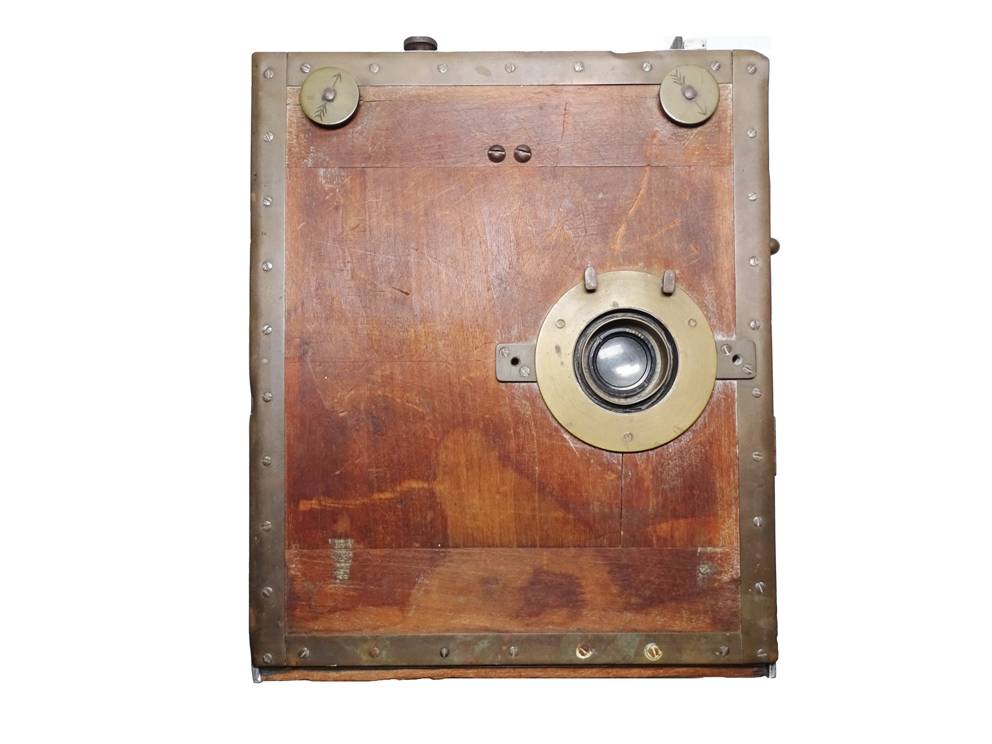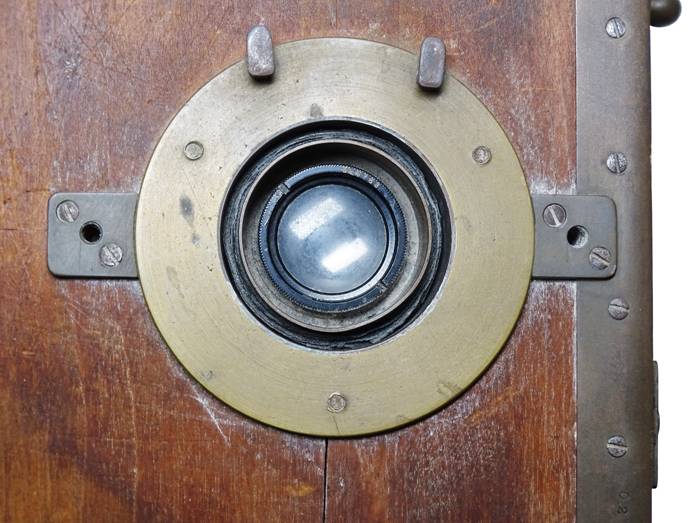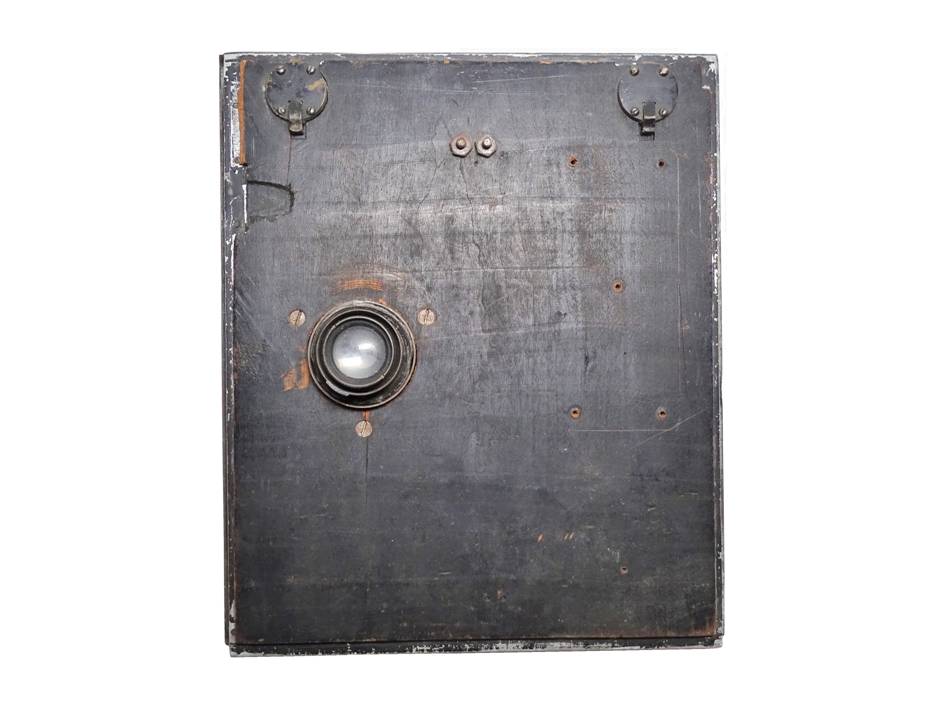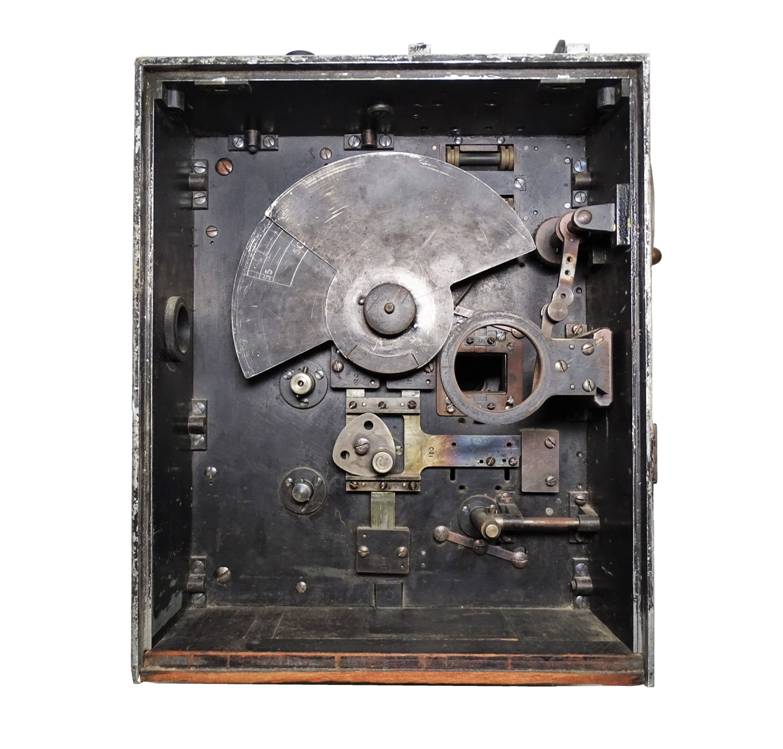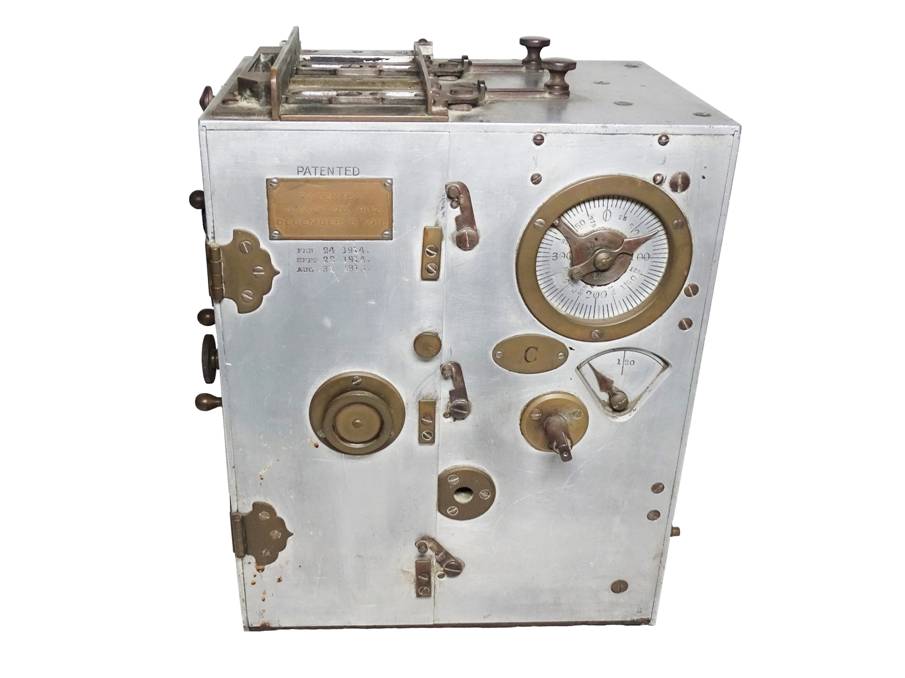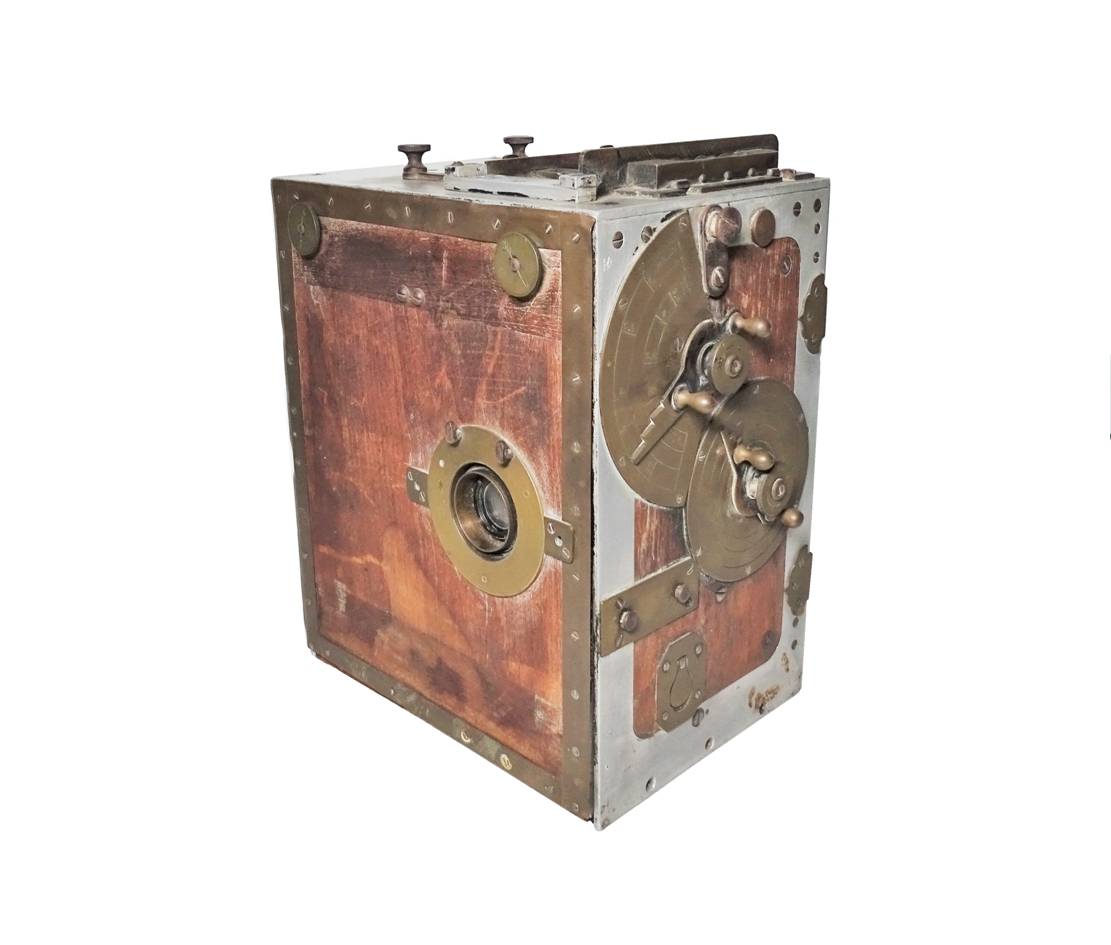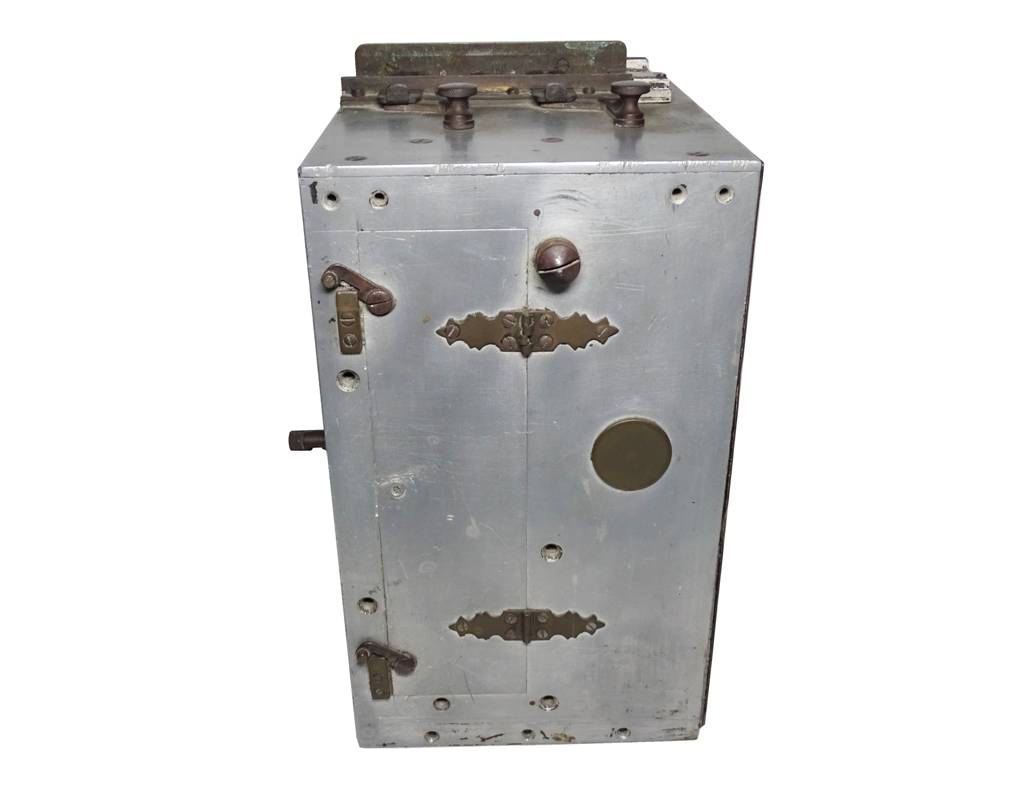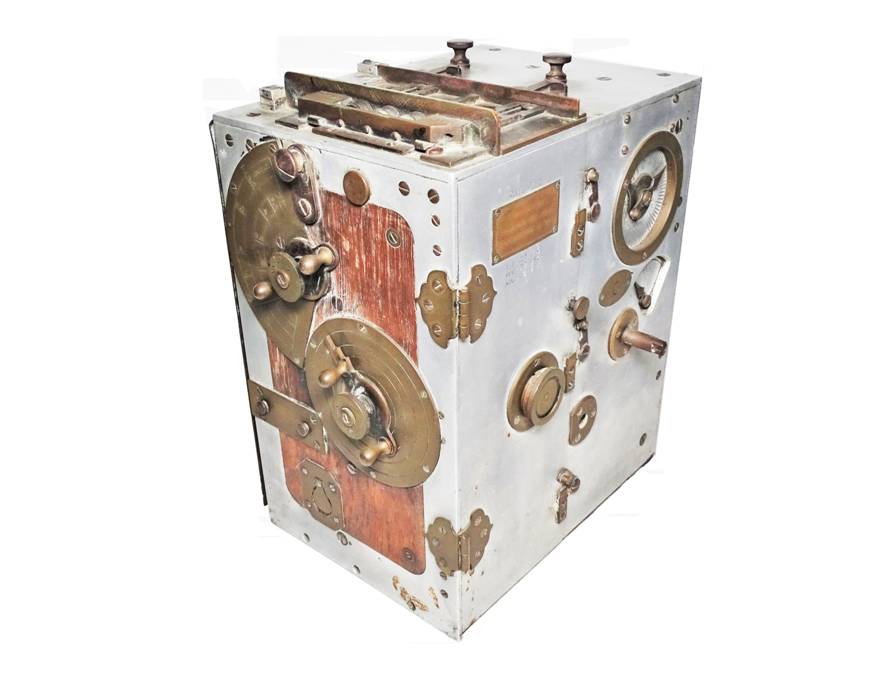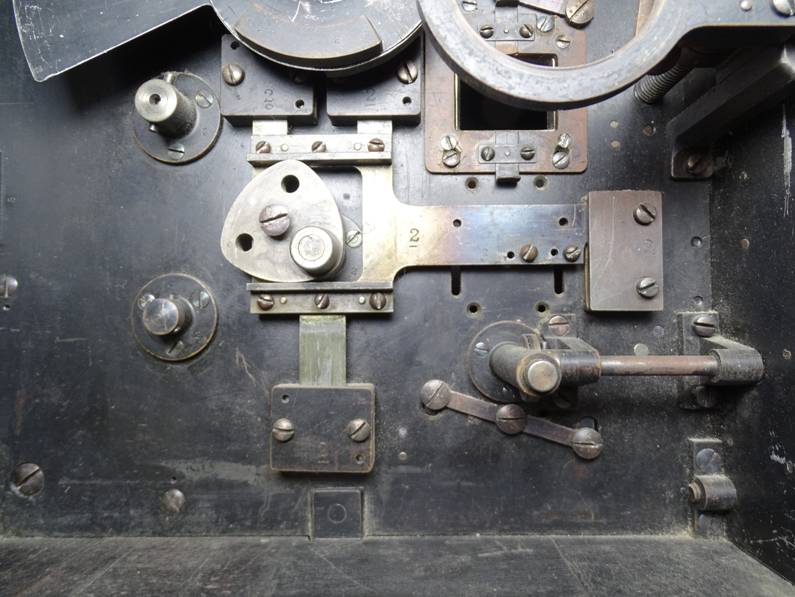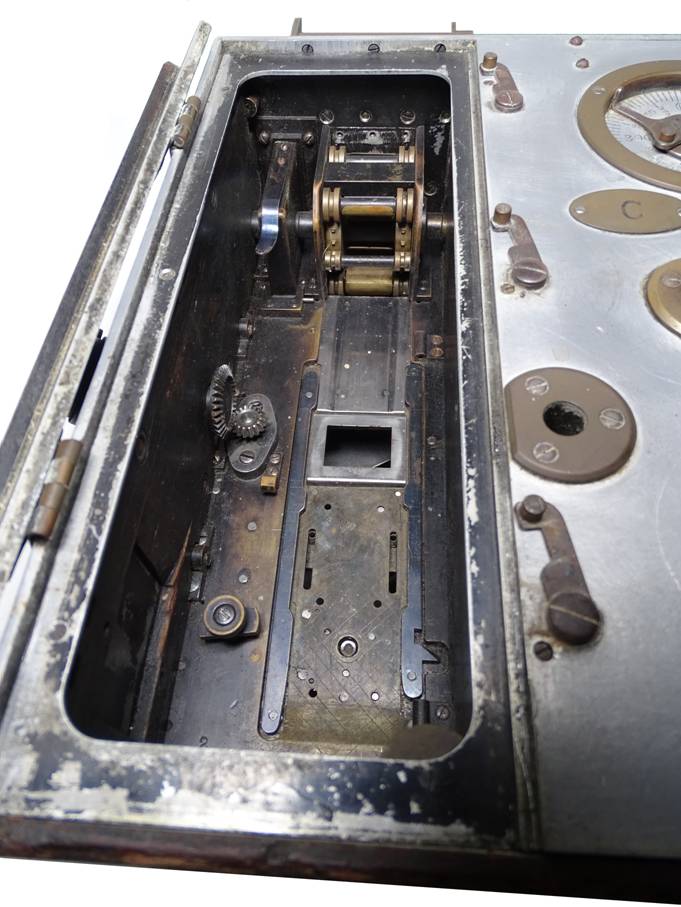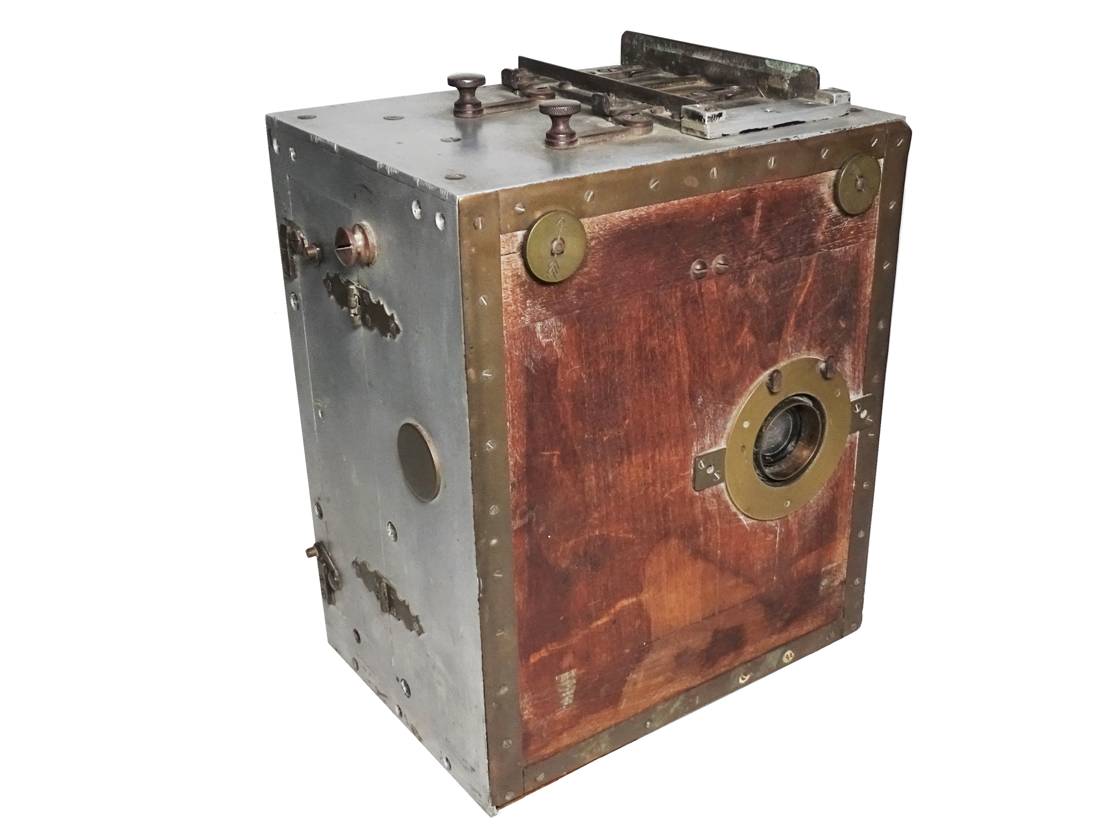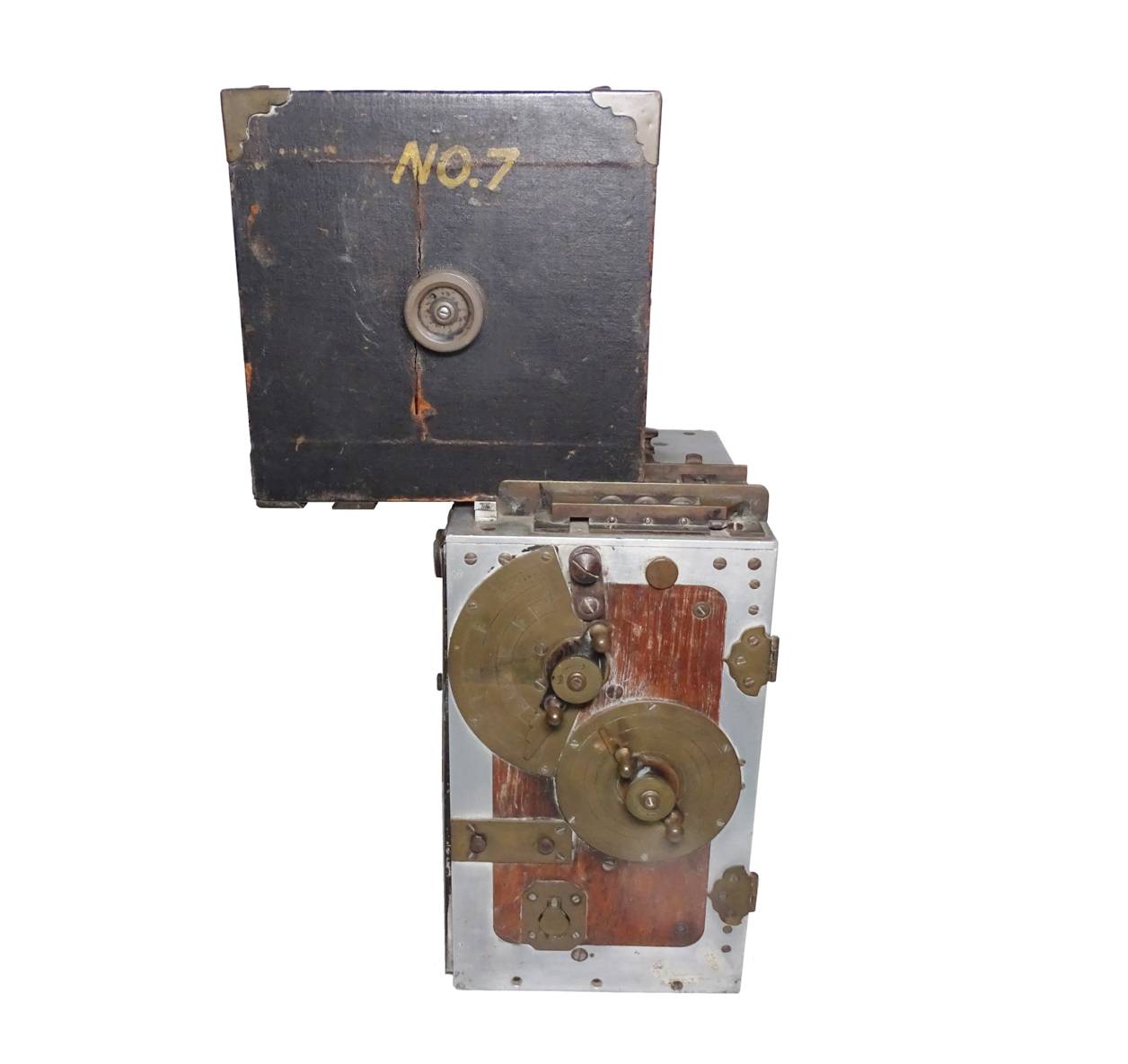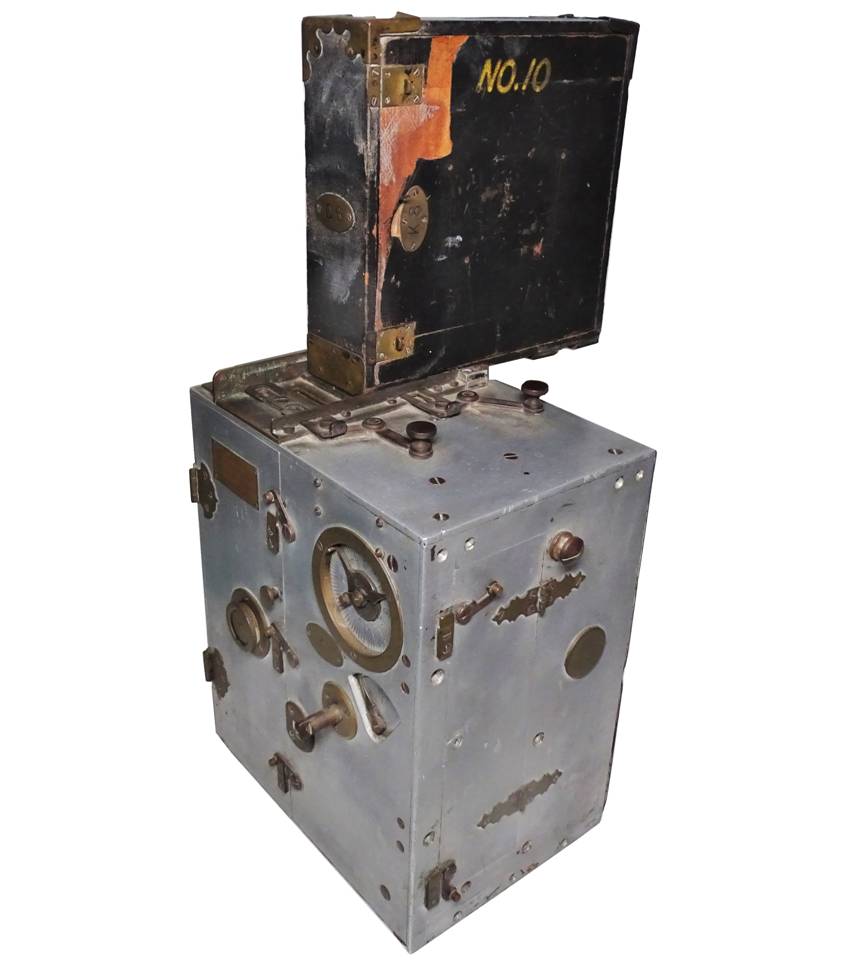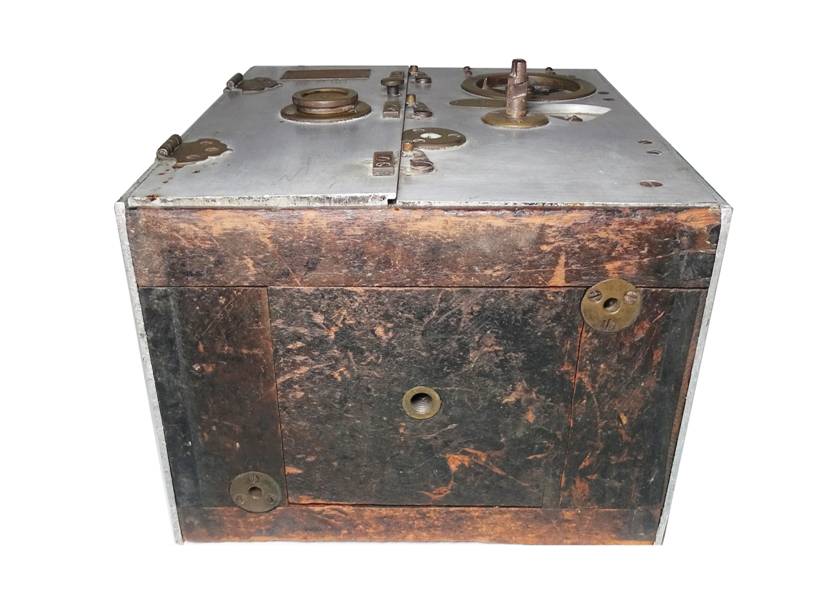LUBIN 35MM MOTION PICTURE CAMERA
Lubin Manufacturing Company, Philadelphia,
Pennsylvania 1915 - 1916


Regarded as the first movie mogul and
one of the pioneers of the early film industry, Siegmund "Pop" Lubin was not only producing films for
mass distribution, but would ultimately manufacture the cameras and
kinetoscopes used to make and project the finished product. Although Lubin
began distributing films for Thomas Edison in 1896, and producing silent films
by 1897, Lubin Manufacturing Company
would not be established until 1902.

Siegmund
"Pop" Lubin circa 1913
Image source: Exibitors' Times
May–Sep 1913, courtesy Wikipedia

Lubin
Manufacturing's "Liberty Bell" trademark
Having a last patent date of August 31,1915,
this Lubin 35mm Motion Picture Camera
would have been manufactured sometime between that date and September 1, 1916,
when the company closed its doors after having filed bankruptcy. Its design was
radically different from one of Lubin's earliest cameras from 1903, which can
be seen by following this link to The
Malkames Collection: http://www.malkamescameracollection.com/index#/new-page
At least three models of Lubin's cameras
have been seen. The earlier wooden model (Malkames Collection), the model
featured here, and the one seen below which may possibly be the last version of
the camera produced. Note that the massive brass aperture and focus levers are now
gone from the camera's left side, replaced with a smaller focus knob and an
aperture scale and lever located on the frront panel to adjust the aperture:

Image
source unknown

Image
source unknown
The Lubin could also be used as a
printer, via an attachment to the camera along with a light source. The design concept
was covered under Patent No. 1,205,582, and can be seen on the example found in
the George Eastman Museum:
Lubin
Camera with Printer Attachment - George Eastman Museum
It's interesting to note that the George
Eastman Museum's example shows the printer attachment mounted at the front, as
opposed to the patent drawing showing it atop the camera; the light source was attached
to the back of the camera as reflected in the drawing below:


Image source: Google Patents Image source: Google Patents
Lubin manufactured projectors under the "Life Motion Picture Machines and
Films" label, such as the Lubin
"Marvel" Cineograph seen below:



Lubin "Marvel" Cineograph wood-cased model from about
1903-1908
Although no manufacturer's tag or other
maker's mark is found on the camera or film magazine, five patent dates are found
on the camera's rear access door. The first two are found on the brass tag
affixed, the last three being stamped into the film gate access door:

August 26, 1902 - Patent No. 707,934 granted to Woodville Latham for a Projecting Kinetoscope,
assigned to the E. & H.T. Anthony & Company, New York (The Latham Loop
patent)
December 5, 1911 - Patent No. RE13329 (reissue of earlier Patent No. 589,168 granted on August 31,
1897 to Thomas Edison for a Kinetographic Camera) granted to Thomas Edison for
a Kinetoscope, assigned to the Motion Picture Patents Company of New Jersey
February
24, 1914 - Patent No. 1,087,996 granted to Julien Tessier for a Motion Picture Mechanism,
assigned to Lubin Manufacturing Company
September
22, 1914 - Patent No. 1,111,506 granted to Julien Tessier for a Film Magazine, assigned to
Lubin Manufacturing Company
August
31, 1915 - Patent No. 1,152,238 granted to Julien Tessier for a Camera Lens and
Diaphragm Adjusting Mechanism, assigned to Lubin
Manufacturing Company
Additionally, Tessier was granted five
other patents that were also assigned to Lubin Manufacturing Company:
December 25, 1913 - Patent No. 1,082,053 Tripod Head
January 26, 1915 - Patent No. 1,126,589 Film-Winding Mechanism
November 2, 1915 - Patent No. 1,159,130 Motion Picture Film
November 21, 1916 - Patent No. 1,205,582 Motion
Picture Printing Machine
November 21, 1916 - Patent No. 1,205,583 Film Cleaning and Polishing Mechanism
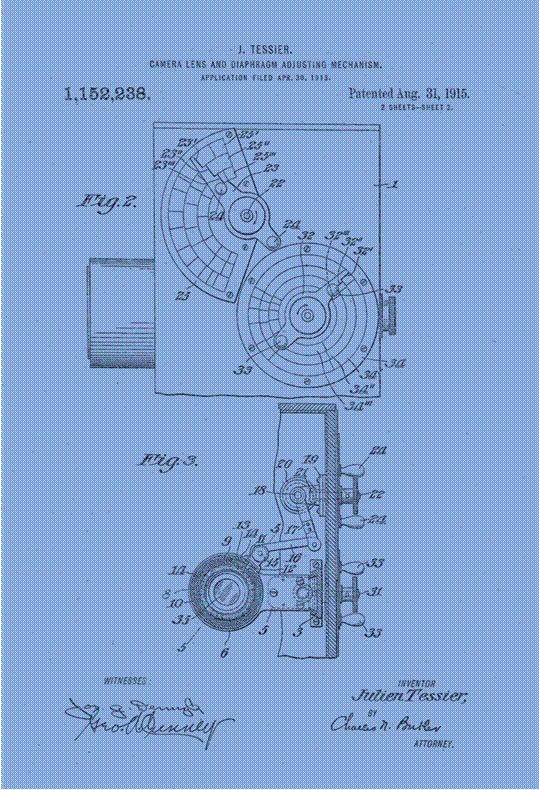
Image source:
Google Patents
The first two patents cited on the brass tag (for the
Latham Loop and Edison's Kinetographic camera), probably acknowledged the
camera's licensing under the Motion Picture Patents Company (the Edison Trust),
as the camera incorporated elements of these patents controlled by the Edison
Trust. At the time this particular camera was built, the Trust was still in effect,
with Siegmund Lubin having become a member after resisting joining the MPPC in
its earlier years and having tired of a number of legal challenges. By October
1, 1915, the Trust was deemed illegal, and despite their subsequent appeal, the
MPPC was finally terminated in 1918.
The last three patents stamped on the camera, specific to
the Lubin 35mm's design, were granted to Julien
Tessier and assigned to the Lubin Manufacturing Company of Philadelphia,
Pennsylvania. Tessier, a French engineer, had previously worked for Pathe
before coming to Lubin. These patents, along with a few photos of other known
Lubin 35mm cameras, support the camera's identification. In 1921, Tessier began
an association with Eastman Kodak, lasting at least seven years. He was granted
at least fourteen additional patents,
all assigned to Eastman Kodak, a number of them related to various design
aspects for Eastman's first 16mm motion picture camera, the Cine-Kodak Model A:

Cine-Kodak Model A
A great photo of Julien Tessier with a Lubin 35mm,
alongside a Cine-Kodak can be seen at the Vintage Cameras website:
Some of the Lubin's features, such as the film gate's
design, through the lens viewing/focusing, top-mounted wooden film magazines
and an internally mounted lens to name a few, are very similar to the Pathe Professional 35mm of the same
period. With the Pathe having been the industry standard for a number of years
prior, Lubin probably "borrowed" these attributes from the Pathe,
further distinguishing his camera with other patented improvements.
This example is incomplete, missing its film gate, crank
handle, one film magazine, drive springs and some other internal linkage. It
was acquired with a Goerz Berlin Kino Hypar F1:3.3 55MM lens. Although the
camera's aperture dial is marked "Heliar" suggesting the camera was
originally equipped with that lens, the Goerz Kino Hypar would have also been period correct. At least one other example
has been seen with a Carl Zeiss Tessar:

The camera's magazines held 400 feet of
film, as reflected on the footage counter:

Other than the numbers "2" and "02" which appear on the bottom right edge of the back
panel, on the shutter mechanism assembly, in the film gate chamber and on three
of the brass strips that frame out the front panel, there are no other numbers
or markings. This number is either a serial number, an assembly number (usually
found on multiple components that are fitted to a specific camera) or possibly
it served as both the serial and assembly number:



The significance of the oval tags with either
alpha or alpha numeric characters on the camera and the film magazines, is
undetermined. Possibly, they referenced a particular production unit, or they
were used to track which cameras and magazines were used on a particular shoot:


Compared against the Pathe Professional
35mm, the Lubin's film magazines are rather heavy at about 2-1/2 pounds unloaded.
They secure to the body using Lubin's patented mounting system (Patent No.
1,087,996), and because film slots are located at each end of the magazine's
base, any magazine can be used in the feed or take-up position:
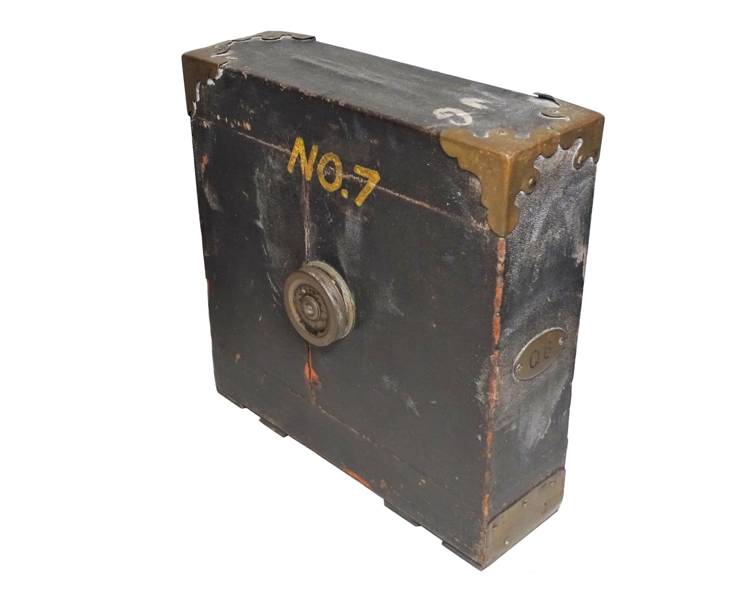
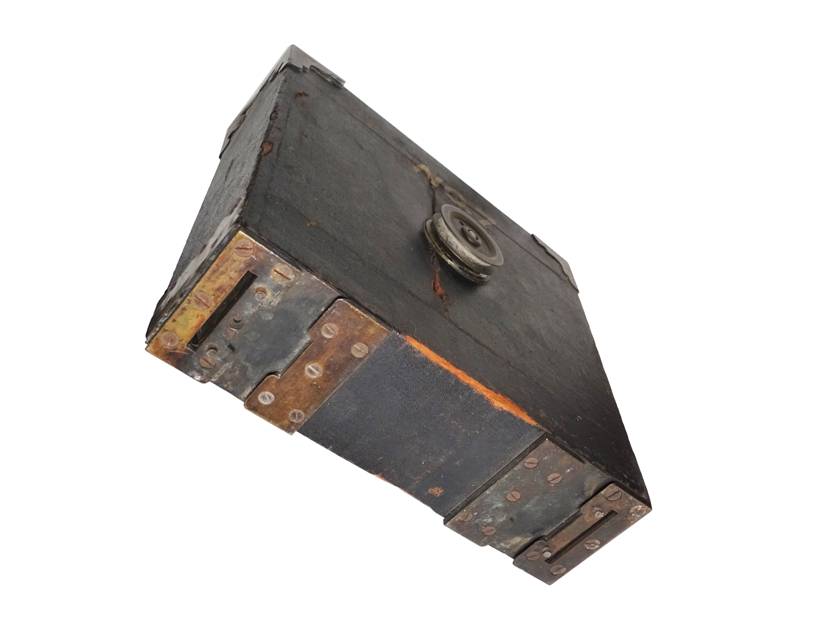
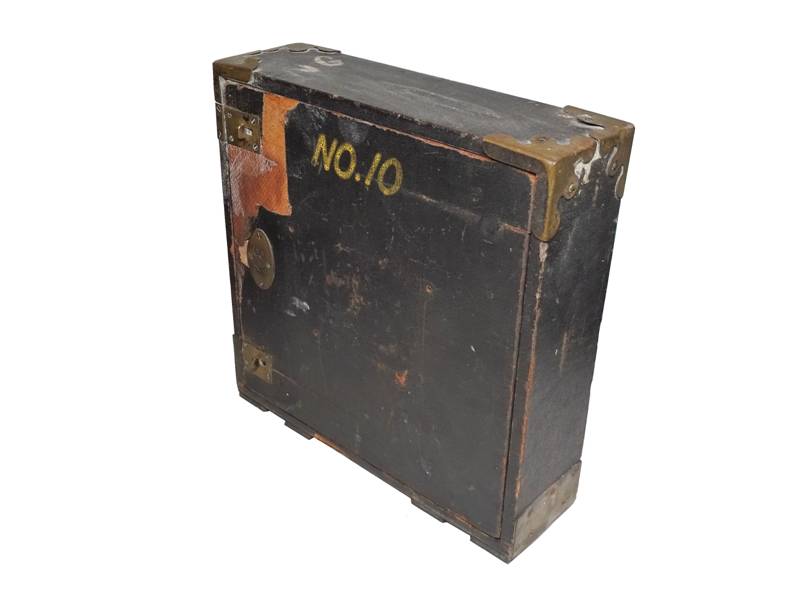
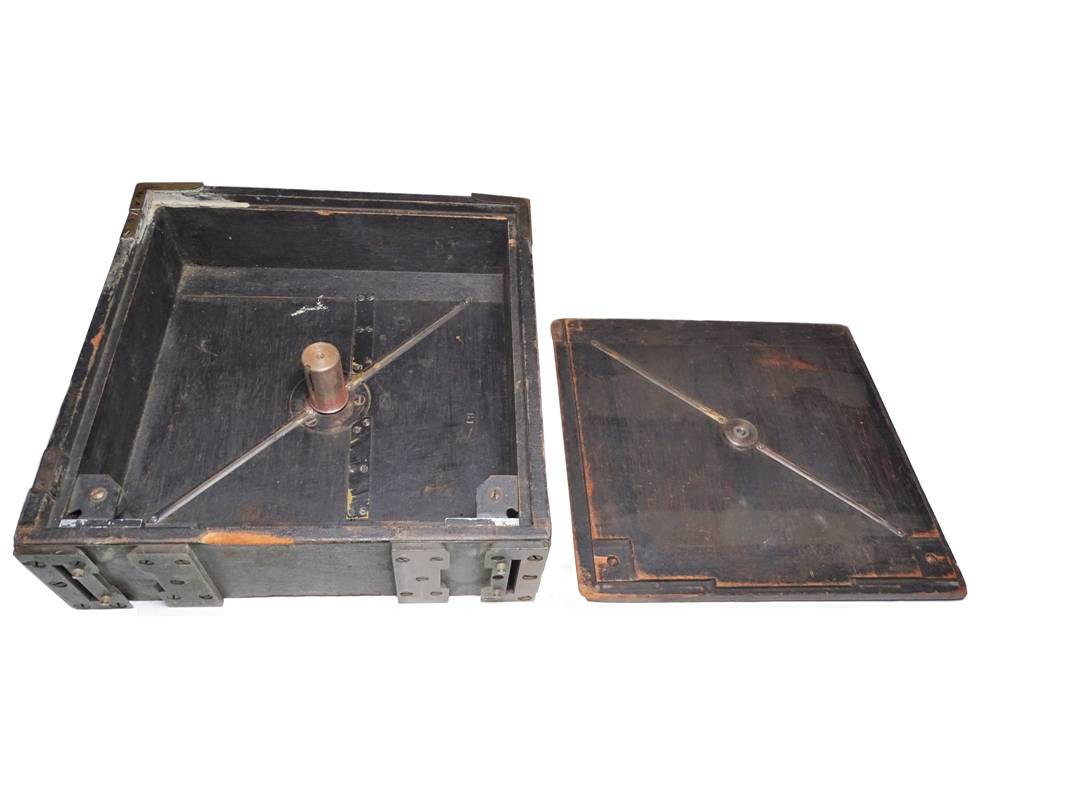
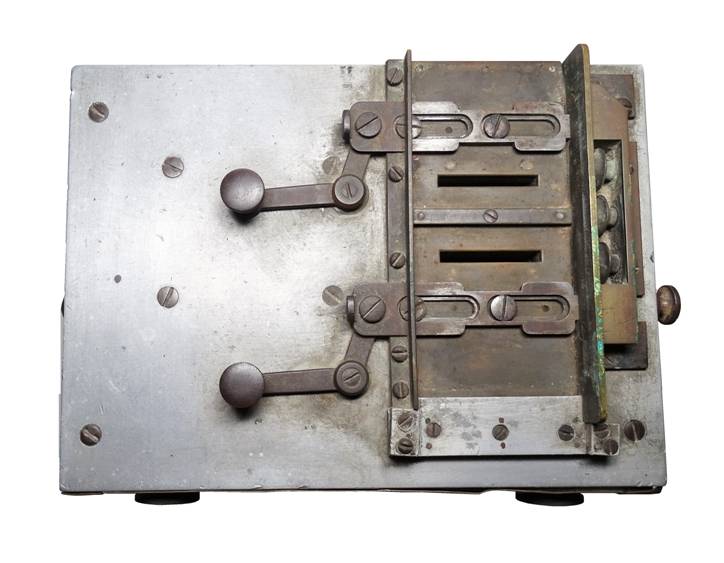
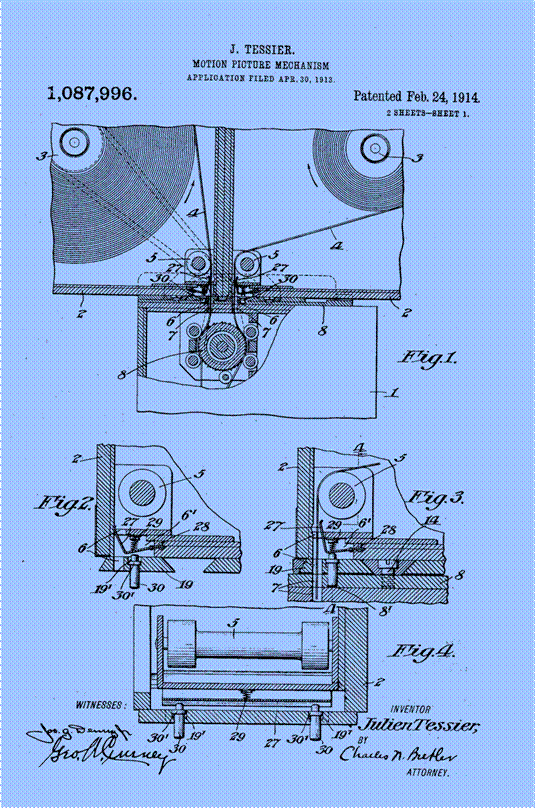
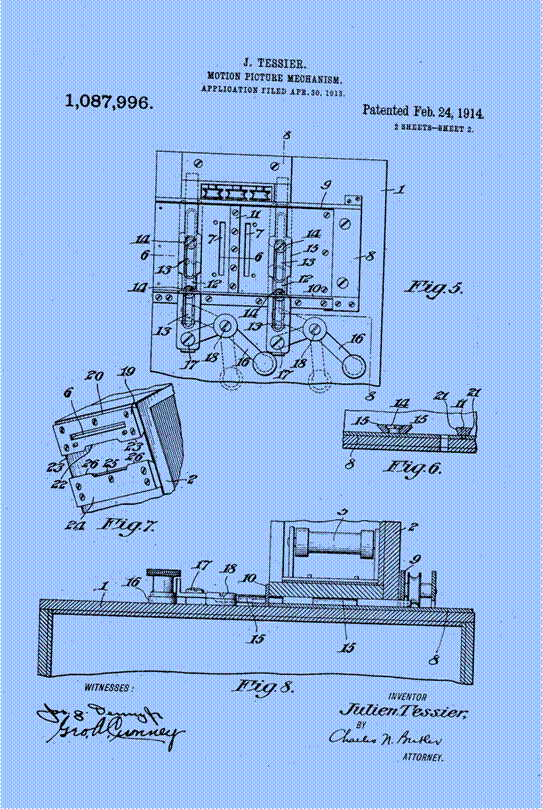
Image source: Google
Patents
Image source: Google Patents
It's unknown as to when this model of the Lubin 35mm was
introduced, or for how long the earlier wooden-bodied version was produced.
Very few examples of any of Lubin's cameras survive
today, and they are considered very rare, most especially the very earliest
wooden model.
For more information on the Cine-Kodak Model A, the Pathe
Professional 35mm and the Lubin
Cineograph, click on the links below:
Lubin
"Marvel" Cineograph Lens
